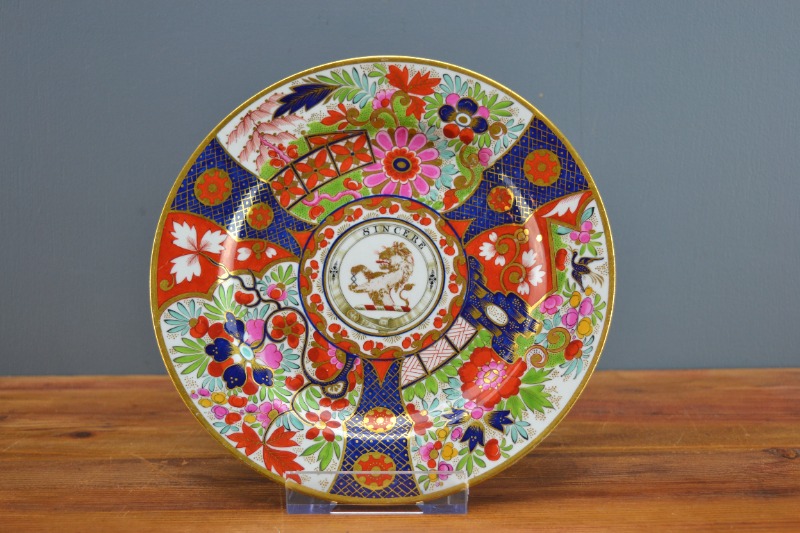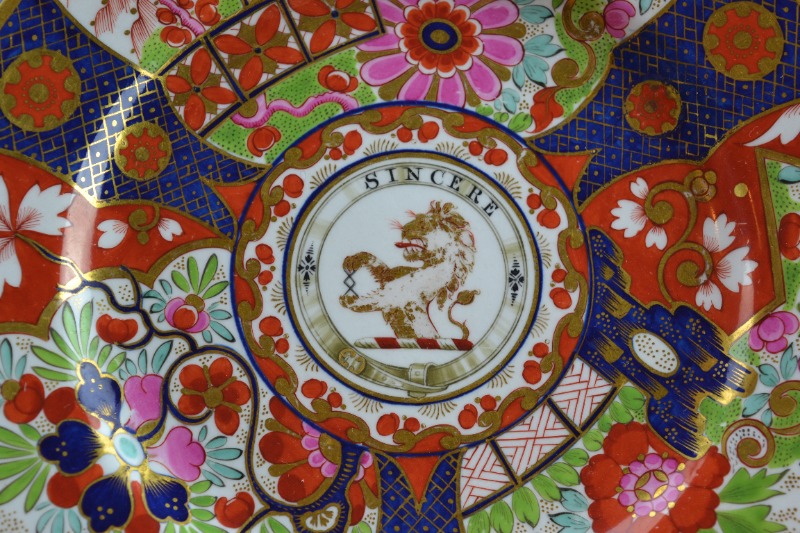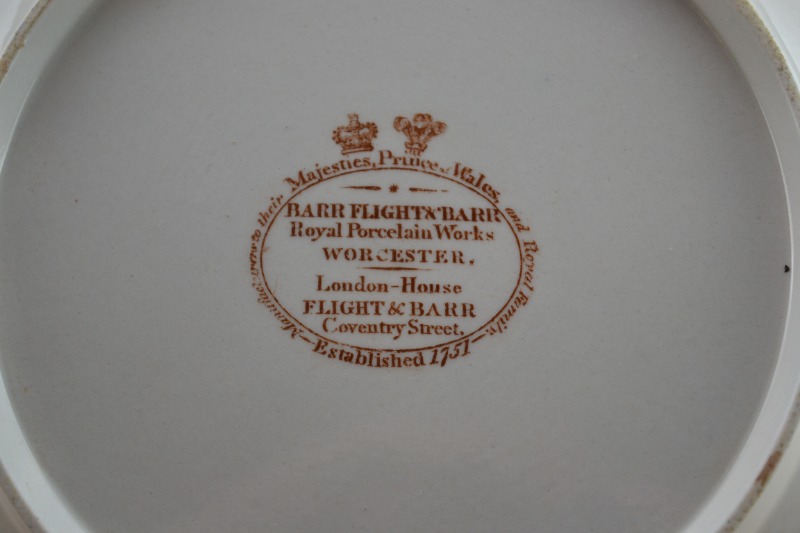Worcester (Barr, Flight & Barr) Crested Imari Dessert Plate, c. 1804-13
Age:
Circa 1804-13
Material:
Porcelain
Dimensions:
Diameter: 20.5cm
Shipping:
Standard Parcel
Price:
£ 110
This item is available to view and buy at:
Carse of Cambus
Doune
Stirlingshire
FK16 6HG
A Worcester desert plate painted in the ‘Japan‘ or Imari pattern, with elaborate panels of a fenced garden, pierced rockwork and flowering branches separated by blue diaper bands. In its centre is the crest of a gilt rampant lion, within a belt inscribed SINCERE. Marked on the back with “Barr Flight & Barr, Royal Porcelain Works Worcester. London House Flight & Barr Coventry street, established 1751” with the royal crown and Prince of Wales feathers and the encircling words: “Manufacturer to Their Majesties Prince of Wales and Royal Family”.
The plate has wear to the gilding of the lion. Otherwise, it is in excellent condition with no chips, cracks and minimal rubbing.
This plate comes from a service provided for Colonel Pauling Carruthers of Painswick, Gloucestershire, which has been several times sold through Sotheby‘s: on 4 July 1964 in London (lot 146), 11 April 1997 in New York (lot 317) and most recently a part dessert service (6 place settings) on 12 August 2020 in New York (Lot 293) which sold for $11,340. A variation of the pattern, bearing the crest and feathers of the Prince of Wales, made circa 1807, is illustrated in Henry Sandon, Flight and Barr Worcester Porcelain 1783-1840, p. 19. The Worcester Warmstry House factory was founded in 1751 by 15 partners. In 1783 the factory was purchased outright by its London agent, Thomas Flight, for his two sons Joseph and John. Following the death of John Flight in 1791, Joseph Flight took Martin Barr (c.1757–1813) into partnership. They were joined in 1804 by Martin Barr Junior, becoming ‘Barr, Flight & Barr’.
Some of the finest British porcelain was made at the Warmstry factory during this decade. During the late 18th and early 19th centuries Chinese porcelain decorated with the family Coat of Arms was a great status symbol. The porcelain took years to arrive and was sometimes full of mistakes. Worcester produced a magnificent alternative, becoming the height of fashion in the early 19th century. Customers included Tzar Alexander I, The Duke of York, King George III, King William IV, The Duke of Clarence, The Imam of Muscat, The Marquis of Buckingham and the Nabob of Oude. The Prince of Wales bought at least six services including two Imari dessert services in 1807 and awarded the company his Royal Warrant in the same year.



